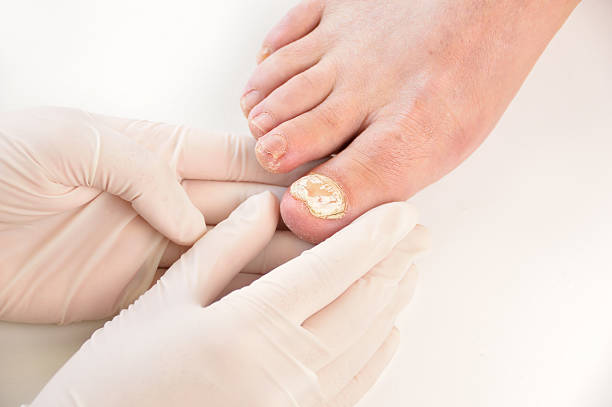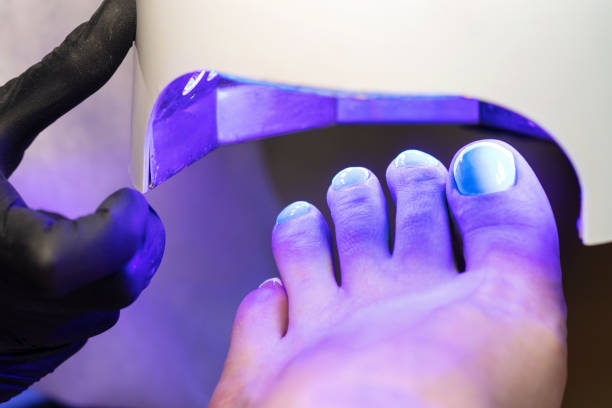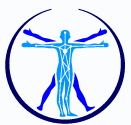If left untreated a fungal nail infection can spread from one toe to another and to other people. Treatment options include anti-fungal ‘paints’ that need to be applied daily or weekly.
Laser treatments such as Lunula use near infra-red light that passes through your nails and skin to kill the fungus without damaging your healthy tissue. However, the cost of this new technology can be quite high and some insurers do not cover it.

What is Cold Laser Therapy?
Laser therapy produces a healing effect in the cells and tissues of the body. Unlike other treatments that mask or cover up conditions, laser light interacts directly with cells, causing a natural reaction that speeding up and strengthening the body’s healing response. This can lead to the resolution of many different chronic (long-term) conditions such as painful joints, arthritic pain, back pain and even nail fungus.
The latest solution for treating toe nail fungus is with a new cold laser therapy. The device uses a dual-frequency laser system with two rotating beams that are able to penetrate the nails, toenails and surrounding skin for the most comprehensive treatment of toe nail fungus. This system is able to treat more of the toenails at once than other laser treatments that require multiple sessions.
The violet beam of the cold laser therapy treatment reaches deep into the nail to weaken the fungal cell membranes. This allows the body’s natural antifungal defences to remove the infection from the nail and surrounding tissue. The red beam is able to increase blood flow in the nail and surrounding skin, which also helps your body remove the infection. The result is a clear and healthy nail that is no longer covered with fungus. The combination of this treatment with preventative measures, such as wearing breathable shoes and socks may help reduce the chances of relapse or reinfection of the nail.
How Does Cold Laser Therapy Work?
Cold Laser Therapy (LLLT) uses light to stimulate healing. This non-invasive procedure can help relieve pain from soft tissue, joint and tendon injuries, including carpal tunnel syndrome and fibromyalgia. It can also reduce inflammation and accelerate wound healing and tissue growth. It’s a great alternative to surgery or taking long-term prescription medications.
The wand with the light-emitting diodes penetrates your skin and passes through the injured area. When it hits the mitochondria in your cells, it causes a chemical reaction that signals the cell to produce more adenosine triphosphate. This increased ATP production will lead to faster healing and reduced inflammation.
Unlike the high-intensity laser that surgeons use to cut through tissues, this low-level light is not harmful and does not cause damage to healthy cells. This is why the FDA has cleared LLLT for many conditions.
While you can find a number of LLLT products available for home use, it’s important to work with a fungal nail clinic doctor who is trained in the technology. Many of the devices on the market make bold claims about what they can do, including helping you lose weight, stop smoking or grow hair. However, they may not have the wattage or laser output required to effectively treat pain and other health issues. It’s also important to remember that a combination of treatments is typically needed to get the best results.

What Are the Side Effects of Cold Laser Therapy?
Cold laser therapy is safe, painless and requires no preparation. It is often used in conjunction with acupuncture and physical therapy, to help reduce pain and speed recovery. It is also used to treat skin conditions such as psoriasis and dermatitis. Some studies have shown that cold laser therapy can help with some autoimmune disorders.
The laser light penetrates deep into the tissues and interacts with a wide range of components in the cells. The process mimics photosynthesis in plants, where the light promotes the release of enzymes that help with growth and healing. The laser can activate mitochondria to increase cellular energy production, which helps the cell repair itself faster. It also stimulates the regrowth of new tissue and decreases inflammation through increased blood flow.
It can also accelerate cellular reproduction and speed up the development of new muscle tissue/collagen. This makes it a powerful tool for pain reduction, accelerating the healing process, and reducing long-term chronic myofascial pain syndromes.
While there are cold laser devices available for home use, it is important to have a professional provide you with the treatment. The device should be properly set up for your specific condition and the correct intensity, frequency, and position should be used. Overuse of the device could lead to overexposure and permanent damage to the skin and tissue.
Is Cold Laser Therapy Effective?
Cold laser therapy it is very effective and offers an alternative to oral antifungals and other topical treatments. This is mainly because it does not involve any drug interactions or uncomfortable side effects. In addition, it can be used in conjunction with other treatments such as foot spas or nail polish remover.
Studies to date have shown that LLLT can significantly improve nail fungal clearance rates. However, most of these studies were case series with limited sample sizes and short follow up periods.
One study, conducted by Waibel et al, randomly assigned 21 microscopically and fungal culture positive patients to receive laser treatment or a placebo, four weekly treatments for six months. The results demonstrated that nail clearance rates were higher in the group receiving laser treatment than those who received placebo.
Cold laser therapy uses two therapeutic wavelengths, 405nm and 635nm, enriched with a proprietary rotating line-generated beam that maximises the nail surface area and photon concentration to effectively target and kill onychomycosis. The laser light passes through the toenail without causing any damage to it or the surrounding skin, and targets the fungal cell in the toenail by destroying its mitochondria. This results in the toenail becoming clear, but it is important to keep in mind that it will take a while for the new nail to grow in and become fully fungus-free.




